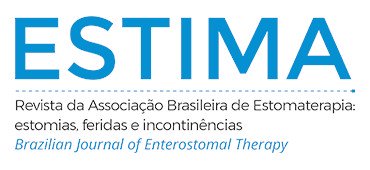PROFILE OF PATIENTS WITH URINARY INCONTINENCE IN A UNIVERSITY HOSPITAL OUTPATIENT CLINIC
Abstract
Objective: to know the sociodemographic and clinical profile of people with urinary incontinence in an outpatient clinic of a University Hospital. Methods: cross-sectional study, using a semi-structured form with 63 women whowere awaiting care at the gynecology and urology outpatient clinics, between the months of July and August 2019. The data were processed in the software Statistical Package for the Social Sciences – SPSS 20.0. Results: interviews were carried out with women aged between 19 and 77 years. Of these, 55.6% maintained an active sex life; 85.7% had pre-existing disease; 69.8% presented urinary loss when coughing, sneezing, smiling, putting on weight and/or making efforts; 12.7% need to urinate as soon as they feel like it; and 17.5% had loss of urine in both situations. About 35% sought consultation due to low bladder and/or loss of urine; 27% had 4 to 5 pregnancies. Among the risk factors associated with urinary incontinence, 28.6% had diabetes mellitus, 61.9% had arterial hypertension, 82.5% used continuous medication, 11.1% was obese, 34.9% reported constipation problems and 74.6% underwent pelvic surgery. Conclusion: it was concluded that all women in the study had more than one risk factor for developing urinary incontinence, reinforcing their multifactoriality, as well as the importance of a holistic and multiprofessional treatment.
Downloads
Metrics
References
Brasil DM, Nicolau AI, Bilhar AP, Karbage AS, Lucena SV, Carmo TF et al. Incontinência urinária e função sexual feminina: revisão integrativa de questionários validados. Acta paul. Enferm. 2018; 31(5): 558-563. https://doi.org/10.1590/1982-0194201800077
Sociedade Portuguesa De Ginecologia. Consenso Nacional sobre Uroginecologia Incontinência Urinária de Esforço: Um perfil da clientela, junho de 2018 – Secção Portuguesa de Uroginecologia.
Riemsma R, Hagen S, Kirschner-Hermanns R, Christine N, Helle W, Karl-Erik A et al. A incontinência pode ser curada? Uma revisão sistemática das taxas de cura. BMC Med.2017; 15: 63. https://doi.org/10.1186/s12916-017-0828-2
Benício CDAV, Luz MHBA, Carvalho NV, Brito BAM, Ferreira JLS. Conhecimento de Mulheres Incontinentes sobre Incontinência Urinária: uma Reflexão Teórico Crítica. Estima–Brazilian Journal of Enterostomal Therapy. 2017; 15(1): 58-61. https://doi.
org/10.5327/Z1806-3144201700010010
Junqueira JB, Santos VLCG. Incontinencia urinaria en pacientes hospitalarios: prevalencia y factores asociados. Rev. Latino-Am. Enfermagem [Internet]. 2017; 25: e2970. https://doi.org/10.1590/1518-8345.2139.2970
Abrams P, Cardozo L, Wagg A, Wein A. Incontinence. 6th International Consultation on Incontinence. International Contnence Society. Tokyo. 2017.
Santos CRS, Santos VLCG. Prevalência da incontinência urinária em amostra randomizada da população urbana de Pouso Alegre, Minas Gerais, Brasil. Rev. Latino-Am. 2010;18(5): 1-8. http://doi.org/10.1590/S0104-11692010000500010
Benício CDAV, Luz MHBA, Lopes MHBM, Carvalho NAR. Incontinência Urinária: Prevalência e Fatores de Risco em Mulheres em uma Unidade Básica de Saúde. Estima–Brazilian Journal of Enterostomal Therapy. 2016; 14 (4): 161-168. https://doi.org/10.5327/Z1806-3144201600040002
Oliveira LGP, Oliveira AG de, Souza G de, Resende MA. Incontinência urinária: a atuação do profissional de enfermagem. REAS. 2018; (18):e118. https://doi.org/10.25248/reas.e118.2019
Benício CDAV. Avaliação do impacto de blog na autoconfiança de pacientes e cuidadores praticantes do cateterismo intermitente limpo. Tese (Doutorado em Enfermagem) – Universidade Federal do Piauí, Centro de Ciências da Saúde, Programa de Pós-Graduação em Enfermagem, Teresina, 2018.
Favoretto NB. Development of a virtual forum for people with spina bifida and their families: Collaboration and Exchange of Technology between Brazil and Germany. 2015. Tese (Doutorado em Enfermagem) – Universidade de São Paulo, Faculty of Rehabilitation Sciencesat the University of Dortmund, Germany, São Paulo, 2015.
Silva SLA, Torres JL, Peixoto SVA. Fatores associados à busca por serviços preventivos de saúde entre adultos brasileiros: Pesquisa Nacional de Saúde, 2013. Ciênc. saúde coletiva. 2020; 25(3):783-792. https://doi.org/10.1590/1413-81232020253.15462018
Bitencourt GR, Felippe NHMD, Santana RF. Diagnóstico de enfermagem eliminação urinária prejudicada em idosos no pósoperatório: um estudo transversal. Rev. enferm. UERJ.2016; 24(3):e16629. https://doi.org/10.12957/reuerj.2016.16629
Townsend MK, Curhan GC, Grodstein F, Resnick NM. Original research: rates of renission improvement and progression of urinary incontinence in Asian, Black and White womwn, AJN The American Journal of Nursing, 2011;111(4):34-35. https://doi.
org/10.1097/01.NAJ.0000396551.56254.8f
Instituto Brasileiro De Geografia E Estatística (IBGE). [acesso em 23 de maio de 2019] Available at: https://agenciadenoticias. ibge.gov.br/agencia-sala-de-imprensa/2013-agencia-de-noticias/releases/23852-ibge-divulga-o-rendimento-domiciliar-percapita-
Pacagnella RC, Martinez EZ, Vieira EM. Validade de construção de uma versão em português do Índice de Função Sexual Feminina. Cafajeste. Saúde Pública. 2009; 25 (11): 2333-2344. https://doi.org/10.1590/S0102-311X2009001100004
Oliveira JR, Garcia RR. Cinesioterapia no tratamento da incontinência urinária em mulheres idosas. Rev. bras. geriatr. gerontol. 2011; 14 (2): 343-351. https://doi.org/10.1590/S1809-98232011000200014
Matos MAB, Barbosa BLA, Costa MC, Rocha FCV, Almeida CAPL, Amorim FCM. As Repercussões Causadas pela Incontinência Urinária na Qualidade de Vida do Idoso. Rev Fund Care Online.2019; 11(3):567-575. https://doi.org/10.9789/2175-5361.2019.
v11i3.567-575
Ting HY, Cesar JÁ. Urinary incontinence among pregnant women in Southern Brazil: A population-based cross-sectional survey. PLOS ONE. 2020; 15(6): e0234338. https://doi.org/10.1371/journal.pone.0234338
Mourão LF, Araújo Luz MHB, Marques ADB, Vasconcelos Benício CDA, Teixeira Nunes BMV, Pereira AFM. Caracterização e fatores de risco de incontinência urinária em mulheres atendidas em uma clínica ginecológica. Estima–Brazilian Journal of
Enterostomal Therapy. 2017; 15(2). https://doi.org/10.5327/Z1806-3144201700020004
Milsom I, Gyhagen M. The prevalence of urinary incontinence, Climacteric, 2019; 22(3): 217-222. https://doi.org/10.1080/13697137.2018.1543263
Oliveira TM, Valdez FML, Lima KES, Magalhães MS, Abdon APV, Bezerra IN. Prevalência de Incontinência Urinária e Fatores Associados em Mulheres no Climatério em uma Unidade de Atenção Primária à Saúde. Rev Bras Promoç Saúde, 2015; 28(4):
-612. Available at: https://periodicos.unifor.br/RBPS/article/view/5422/pdf
Downloads
Published
How to Cite
Issue
Section
License
Copyright (c) 2021 Francisca das Chagas Sheyla Almeida Gomes Braga, Claudia Daniella Avelino Vasconcelos Benício, Sandra Marina Gonçalves Bezerra, Alice da Silva, Allyne Quaresma Costa, Edvania Soares dos Santos, Roxana Mesquita de Oliveira Teixeira Siqueira

This work is licensed under a Creative Commons Attribution 4.0 International License.

























